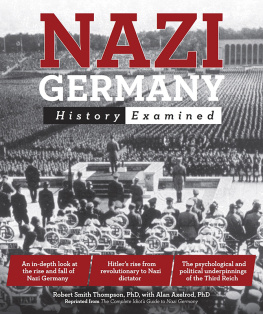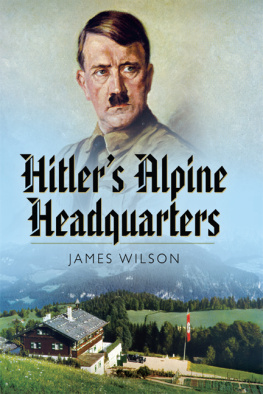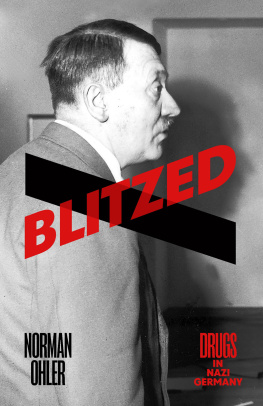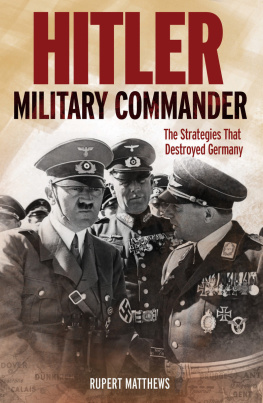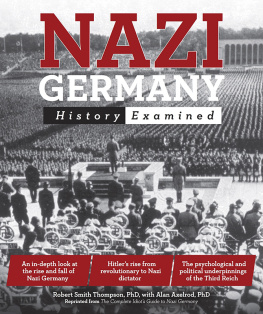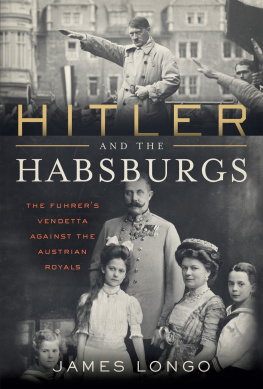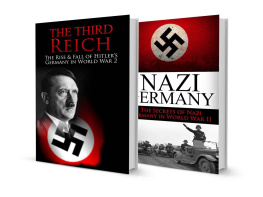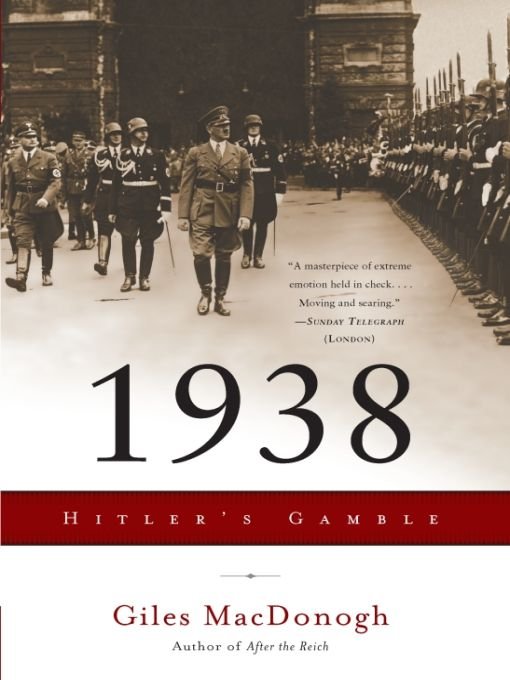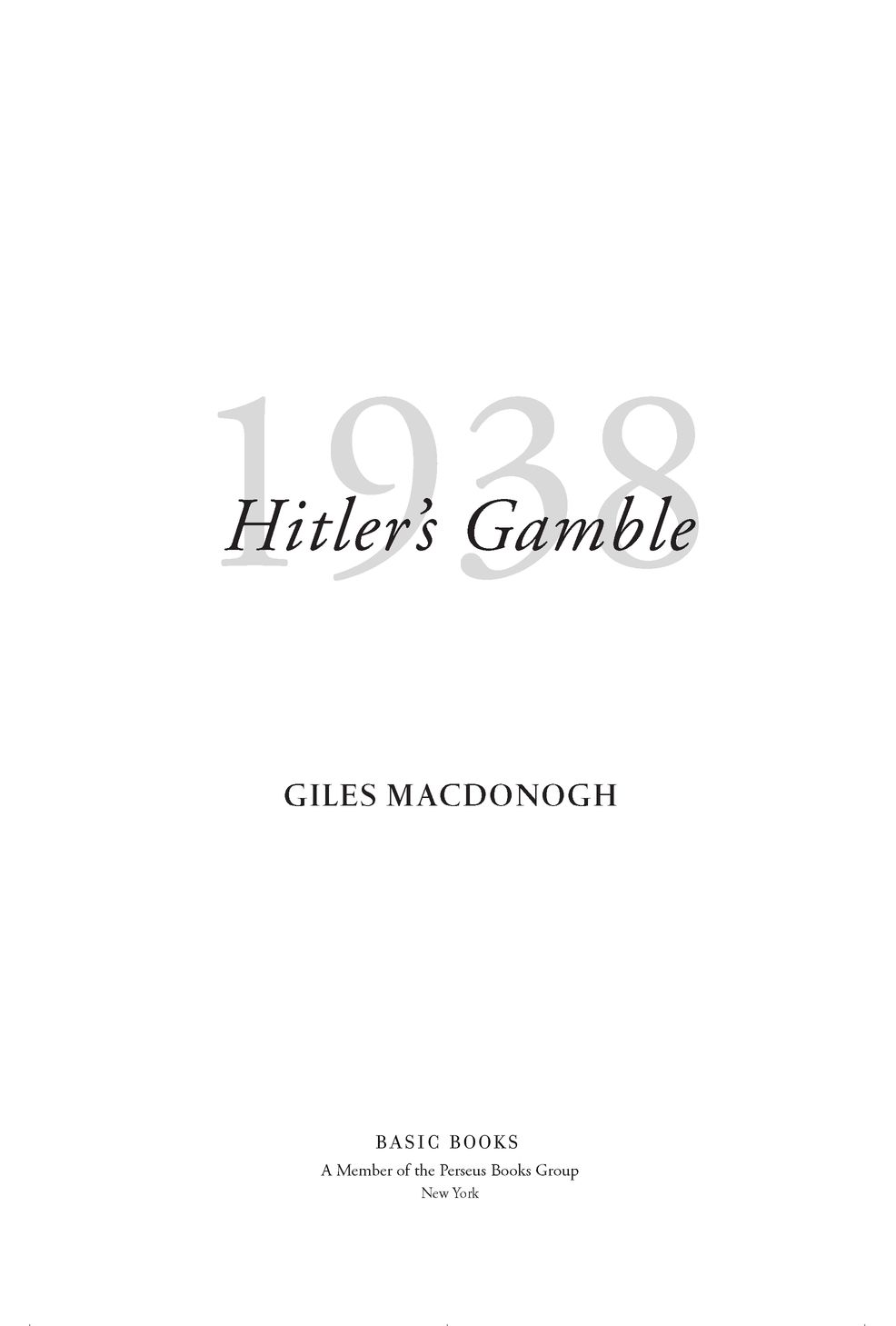Table of Contents
Praise for
1938
Historian Giles MacDonogh chronicles Adolf Hitlers consolidation of power over the course of one year. Until 1938, Hitler could be dismissed as a ruthless but efficient dictator, a problem to Germany alone; after 1938 he was clearly a threat to the entire world.
Washington Times
A fine book... well-written, combining its diverse sources with elegance and skill, and painting an engaging canvas of the disaster that was developing in Germany and was soon to engulf Europe as a whole.... [Giles MacDonoghs] searing descriptions of the fate endured by Austrian Jewryfrom expropriation, casual cruelty, and exile, to calculated persecution and murderare especially impassioned and moving.... It ably conveys the growing desperation and alarm felt by many that year, as Germany began to flex its muscles internationally and stepped up its persecution of its perceived enemies.
BBC History Magazine
In 1938, MacDonogh writes, Hitler hadnt yet become the allpowerful Fhrer who would soon march through Poland and send six millions Jews to the death camps.... Theres no real answer to MacDonoghs What if? question, but one thing is clear: Hitlers extremism grew steadily stronger each time the rest of the world feigned blindness and looked the other away.
New York Post
[MacDonogh] is able to mine dozens of sources in German... [which] help us understand the roots of genocide. The book is excellent on the details of how the Nazis turned on the Jews.
Literary Review
[MacDonogh] uses new sources to flesh out his narrative and within each month he includes verbal snapshots showing different events unfolding. He is particularly good when discussing the Nazi takeover of Austria and of Vienna in particular. He also sheds much new light on the role of the Church of Englands parishes in Austria. Poignancy is added to this superb book because Mr. MacDonoghs maternal grandparents were Viennese Jews.
Contemporary Review
Adolf Hitler was a natural gambler, and this book graphically describes the critical year of 1938 when his winning streak took off.... Harrowing.
Edinburgh Evening News
This micro-focus is chillingly effective.... The author is at his best when interweaving individuals experiences with the incremental machinery of Nazi persecution.... This is a scholarly, highly readable work which makes a fresh and valuable contribution...
The Journal of Military History
An accessible chronicle of crisis and atrocity that should especially interest readers who want to review the gathering storm of World War II.
Booklist
This well-researched, fine-grained study sketches the moral rot that made possible Hitlers rise.
Publishers Weekly
This is not a traditional history based on dry archival sources or details about who said or did what and when.... Interesting and easy to read, this is recommended for avid general readers of World War II history.
Library Journal
[A] careful, thoughtful and wholly fascinating month-by-month account of the countdown to war.
Jewish Journal of Los Angeles
A powerful, disturbing and invaluable analysis of the events in 1938 that enabled Hitler to unleash the full force of his insanity and destruction on the world.
Shelf Awareness
A chilling examination of a critical year in European history.
Kirkus
Giles MacDonogh is quickly becoming a must-read historian for me.... His great writing style draws the reader into the horrible events he is discussing. His research, to my inexperienced eye, seems top-notch, and he brings it all together to create a powerful book. 1938 is well worth your time.
Curled Up with a Good Book
For Augi
Wiedergefunden
Ich ging dann nach drauen, wo die Sterne funkelten und dieAbschsse am Himmel wetterleuchteten. Die ewigen Zeichenund Maleder Groe Wagen, der Orion, die Wega, das Siebengestirn,der Grtel der Milchstraewas sind wir Menschenund unsere Erdenjahre vor diesem Glanz? Was ist unsereflchtige Qual? Um Mitternacht, bei Lrm der Zecher, gedachteich lebhaft meiner Lieben und fhlte, wie auch ihreGre durchdrangen.
ERNST JNGER,
DECEMBER 31, 1942
Introduction
The year 1938 was one of cataclysmal change for Germany. On January 1, the Reich was administered by a right-wing coalition led by the chancellor, Adolf Hitler, and dominated by members of the Nazi Party. The army had sworn a personal oath of allegiance to Hitler, but its commanders had managed to retain a degree of independence. The country lay confined within borders decreed by the Treaty of Versailles nearly twenty years before. Hitler so far had contented himself with policing his own house and grabbing back the Demilitarized Zone in the Rhineland. He had yet to pursue any foreign adventures. Although stripped of their roles in German public life, Jews were still allowed to possess their own property, and many continued to lead relatively normal lives. They were evidently in no hurry to leave.
By New Years Day 1939, everything had changed: The non-Nazis had been purged of all but a few insignificant roles in government; Hitler had assumed total control of the armed forces; Germany had invaded Austria and the German-speaking areas of Czechoslovakia; Jews had been robbed, beaten, and imprisoned, and many had been driven into penurious exile. Hundreds had been killed. Hitler emerged deus ex machina, with all the powers of the Nazi regime consolidated in his own person. And worse was to come. That Germans felt an increase in stress and anxiety during those twelve months is borne out by one telling statistic: Their consumption of strong alcohol doubled in the course of the year.
We now remember 1938 above all for the Munich Agreement, that moment at the end of September in which Western leaders apparently gave in to the Fhrers demands. Peace was hanging by a thread: Hitler had launched his second foreign gamble, and French and British statesmen met their Fascist counterparts in a bid to avoid war. Czechoslovakia was sacrificed for the sake of dtente.
We are also painfully aware of the condition of much of Europe by May 1945: a collection of smoldering ruins filled with fresh or festering corpses. In the intervening years between 1938 and 1945, some 50 million people died violent deaths. There is, however, a danger in hindsight; it would be unfair to seek to draw a direct line between the two, for the line is not straight at all. Before the outbreak of war in 1939, no one could have accurately predicted the depths to which Nazi Germany would sink by the end.
Nonetheless the events that took place in 1938 make it easy to reach the conclusion that Hitler had already mapped out the entire series of conquests by which he had regained the old imperial German borders in the east and more besides. We need to avoid racing to conclusions. Hitler could be more pragmatic than his writings and public utterances suggest, and rather than conducting his activities based on a master plan, he was probably simply hoping to get as much as he could without fighting the great powers. If all went well, and the West made no trouble, other territories might fall into his lap. It was only in the spring of 1939, for example, that he began to make plans to take the Polish Corridor by force, after the Poles refused to concede the territory of Danzig to the Reich.


